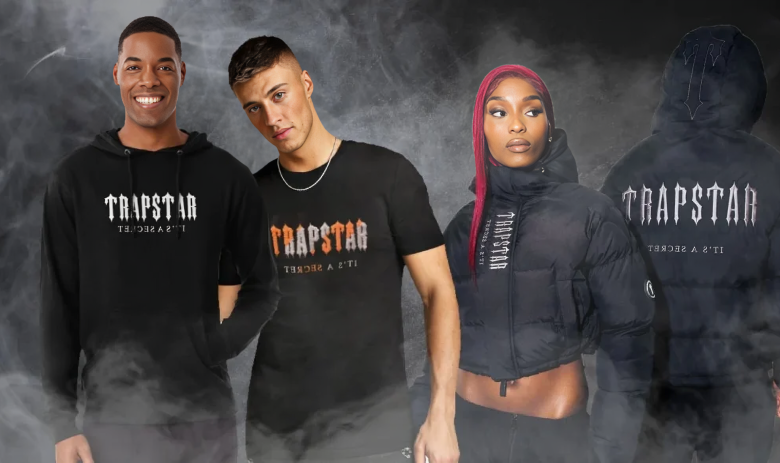Trapstar Clothing: A Cultural Phenomenon Redefining Streetwear

Streetwear has become more than just a style—it’s a movement that blends fashion, music, art, and culture. At the heart of this evolving scene is Trapstar Clothing, a brand that has broken boundaries and captured the imagination of fashion lovers worldwide. More than just apparel, Trapstar represents attitude, identity, and a lifestyle. But how did this underground label evolve into a global force defining streetwear culture? Let’s dig in.
The Rise of Trapstar
Every success story starts with a vision, and Trapstar is no different. Founded in London in 2005 by Mikey, Lee, and Will, the brand began with a unique mission—to create designs inspired by the hidden truths and untold stories of the streets. The founders’ commitment to integrity and creativity helped them carve an authentic path in a hyper-competitive industry.
Trapstar got its start making graphic tees and hoodies, sold discreetly through word-of-mouth networks and limited releases. Early days were tough, with the team working tirelessly to gain recognition in the city’s underground scene. Then came the breakthrough moments that would shape the brand’s trajectory—influential figures in music and fashion started wearing Trapstar, giving it a boost from cult following to global fame.
Key milestones:
- Rihanna was spotted wearing Trapstar, cementing its place in pop culture.
- Jay Z’s Roc Nation partnered with the brand, lending it credibility on the world stage.
These moments transformed Trapstar from an indie disruptor into an internationally recognized icon.
Trapstar’s Impact on Streetwear Culture
What sets Trapstar apart is its ability to transcend fashion—it’s a lifestyle and mode of expression. By tapping into urban culture and staying closely connected with its roots, the brand has become a symbol of rebellion and creativity.
Trapstar has had a significant influence on how the fashion industry views streetwear. Long gone are the days when streetwear was dismissed as casual attire for niche groups. Instead, it now dominates runways and retail spaces alike, and Trapstar remains one of the names leading the charge.
Collaborations have been a huge part of this impact. By blending forces with celebrities like Skepta or global brands like Puma, Trapstar creates unique collections that spark curiosity and excitement. Each partnership introduces the brand to new audiences while staying true to its gritty, unapologetic vibe.
A few notable collaborations:
- A limited-edition line with sportswear giant Puma.
- Custom designs for hip-hop stars such as Meek Mill.
These partnerships don’t just create buzz—they solidify Trapstar’s credibility in fashion, music, and cultural spaces.
The Trapstar Aesthetic
At its core, Trapstar is all about storytelling and bold self-expression. The designs feature striking graphics, heavy use of dark tones, and references to street culture and music. Signature phrases like “Trapstar Irongate” or its iconic logo instantly resonate with fans. It’s a look that’s instantly recognizable, unapologetic, and undeniably cool.
Unlike many brands that try to follow fleeting trends, It thrives on authenticity. Their designs echo the rebellious energy of their beginnings while continuously innovating to stay relevant. This balance of consistency and evolution is the brand’s secret sauce for standing out in a saturated market.
Key design elements:
- Dark palettes paired with pops of contrast, often in red or white.
- Edgy, cryptic messaging that connects with the brand’s core audience.
Whether it’s a jacket adorned with bold graphics or a sleek hoodie with hints of menace, Trapstar designs command attention.
Engaging the Community
It’s success is not just about creating great clothes—it’s about building a loyal, engaged community. Few brands make their audience feel as connected as Trapstar does.
Social media plays a vital role here. Platforms like Instagram aren’t just for showcasing products—they’re used to tell stories, celebrate customer moments, and build hype for upcoming drops. By posting candid behind-the-scenes content and sneak peeks, Trapstar maintains an air of exclusivity that keeps their fans hooked.
The brand also connects through events and pop-ups, which offer more than shopping opportunities. These events bring people together, creating a sense of camaraderie among like-minded individuals. It’s not just about wearing Trapstar—it’s about feeling part of something bigger.
Challenges and Future Outlook
The streetwear scene is constantly moving, and staying ahead isn’t easy. Trapstar faces the challenge of balancing its underground roots with its growing popularity. The risk? Becoming “mainstream” and losing the edge that made it popular in the first place.
Thankfully, the founders have shown they understand what it means to adapt. By listening to their audience, exploring new creative directions, and further solidifying their brand ethos, Trapstar sets itself up for sustained success.
Innovations, like blending tech into their designs or using sustainable practices, are already on the horizon. For a brand like Trapstar, the road ahead is filled with exciting possibilities.
The Future of Streetwear Belongs to Trapstar
Trapstar’s rise is more than just a success story—it’s a cultural phenomenon that blends creativity, passion, and unwavering authenticity. From humble beginnings to a global powerhouse, Trapstar stands as proof that streetwear is here to stay—and that it’s only growing more influential.
Whether you’re someone who wears Trapstar for its signature style or because of what it represents, there’s no denying its impact on the world of fashion and culture. If you haven’t already, now is the time to explore what this brand has to offer.
Want to join the movement? Check out Trapstar’s latest collections and stay tuned for their next drop. Discover how you can score standout pieces and become a part of the Trapstar legacy.





